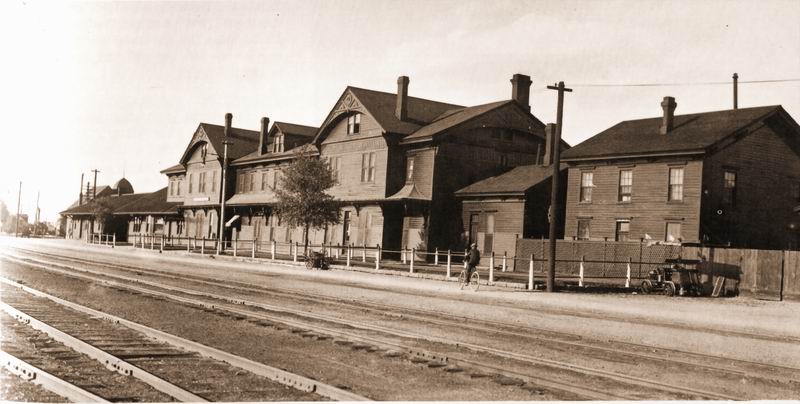History of the Laramie Train Depot
The Laramie Railroad Depot was built in 1924 to replace the town's original Union Pacific Depot/Hotel that was destroyed by fire in 1917. It served as Laramie's Union Pacific passenger depot until 1971 and as an Amtrak depot until 1983. In 1985, the Union Pacific Railroad gave the Depot to the Laramie Plains Museum, which then transferred ownership to the Laramie Railroad Depot Association in 2009.
The Depot is the only remaining building left from the once large Union Pacific presence in Laramie and was added to the National Register of Historic Places in 1988. The railroad is the reason for the City’s original existence, and the Depot is an important part of Laramie’s historic legacy.
The building houses a museum of railroad memorabilia and is used for various community functions such as music concerts, art exhibits and public meetings. The building is also used to raise revenue to maintain itself through rentals for weddings, banquets and other events.
On May 4th 1868, a train whistle marked the arrival of the first train in Laramie on the newest section of the Union Pacific Railroad, whose builders were slowly progressing westward. A day later the line was closed due to a spring snowstorm. Despite this setback, settlers were not deterred from the newest town to be reached by the line, and two weeks later Laramie boasted a population of over 2,000 inhabitants, most of whom arrived by train. Getting off the train, the first building they would have seen was the Laramie station, which the railroad also operated as a hotel and restaurant, located at the foot of present–day Ivinson Ave.
The original Laramie Union Pacific Depot, ca. 1900
After his death at Milk River in 1879, the original Laramie station was named for Major Thomas Thornburg, and was known as the Thornburg Hotel, or “Thornburg House”. In 1900, the station was modified, with two new wings added to the north and south ends, and significant changes elsewhere as well. These renovations were so significant that some historical and newspaper accounts refer to a new station being built.
The photo to the left shows the station after its renovation in 1900. On October 17th, 1917 the station burned, and only the northern addition that served as the women’s waiting room, seen on the left of the picture above was saved. This section was repaired and served as Laramie’s passenger station for the next 7 years.
The current Union Pacific Depot officially opened at 7:00pm, October 6th, 1924 and its new location at 1st and Kearney allowed re-alignment of the Union Pacific mainline and enlargement of the Laramie Yards. After a patient 7-year wait, Laramie residents finally had a modern station with everything a traveler of the 1920s could wish for.
In 1985, the Union Pacific intended to tear down the station, and it was only through efforts of local citizens that the Depot was saved. Train service to Laramie ceased in 1997 and today the Depot is run as a community center available for public use and preserved to celebrate Laramie's railroad heritage.
Laramie Union Pacific Depot, ca. 1924 - H. Svenson Collection, American Heritage Center
Streamliner at Depot, ca. 1937. R.H. Kindig photo, A.J. Wolff Collection
Postcard of the Depot, ca. 1924
Interior - note the handsome Craftsman-style ceiling
The Depot Today, East facade
Current Depot under construction in 1924 (Svenson-Ludwig Collection, American Heritage Center)
Union Pacific shield on the east facade. An identical shield is on the west (track side) facade.







